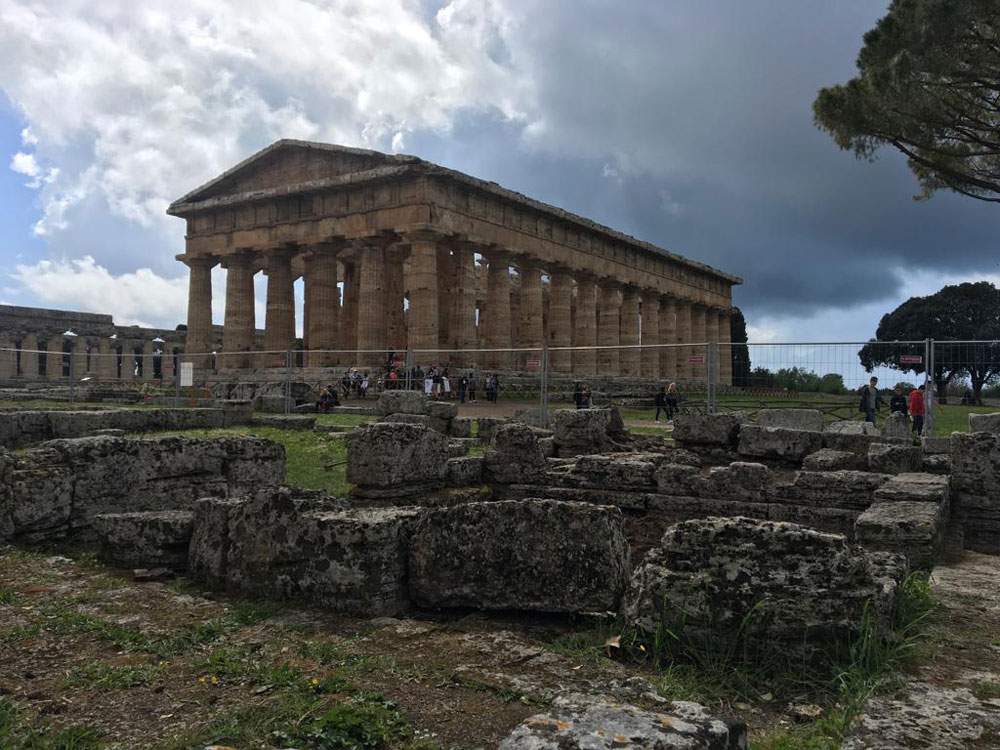Paestum: new excavations reveal the second life of the Temple of Neptune
The mysterious building near the Temple of Neptune, the so-called House of the Priests, whose function remains unknown, would date back to the second life of the most famous temple of Magna Graecia.
From the lack of certain data, “the idea of starting new excavations in a complex that, because of its location next to the altar of the so-called Temple of Neptune, must have been of central importance in ritual activities: thus we hope to have new data on the broader context of the temple, also because we still do not know the deity to whom it was dedicated. Certainly it was not Neptune, but perhaps Apollo or Hera, or who knows,” says Paestum Archaeological Park director Gabriel Zuchtriegel.
According to data from the first excavation campaign, which ended on April 10, 2019, the building was erected between the fourth and third centuries BC, or between the Lucanian and Roman phases. “At that time there were still Greeks in Paestum, but who was in charge were others: first the Lucanians, then the Romans. And with them begins what we can call the ’second life of the temples,’ which remain in use but undergo a reinterpretation. Not only does Hera become Juno, Athena renames herself Minerva, but also the rituals are adapted to the new patrons. It seems that the ’House of the Priests’ is to be framed in this process of revisiting the ancient Greek sanctuary,” Zuchtriegel adds.
From the excavation, it was possible to note that after an initial Lucan and Roman phase, the building underwent a major renovation in the second century BC. A well, which was originally set up in one of the rooms, was enclosed with waste materials and the remains of animals, perhaps sacrificial, while in several places theancient floor of travertine paving stones or beaten earth was covered with a floor of earthenware, which in the South Hall is decorated with lines forming rhombuses.
The link between a discovered hearth or oven located in the center of one of the rooms and the building remains uncertain, however, as archaeologists were confronted with a stratigraphy disrupted by old interventions from the 1950s, which have never been documented.
“More funds are needed, because as is often the case, the excavation raised more questions than it solved. Meanwhile, I thank the archaeologists and workers who worked under the eyes of thousands of girls and boys who passed through there. We decided to excavate publicly, that is, without shielding, with site visits every day for the public present at the excavations. It is the synthesis of our mission: to share research and knowledge with everyone,” declares the park director.
 |
| Paestum: new excavations reveal the second life of the Temple of Neptune |
Warning: the translation into English of the original Italian article was created using automatic tools. We undertake to review all articles, but we do not guarantee the total absence of inaccuracies in the translation due to the program. You can find the original by clicking on the ITA button. If you find any mistake,please contact us.





























